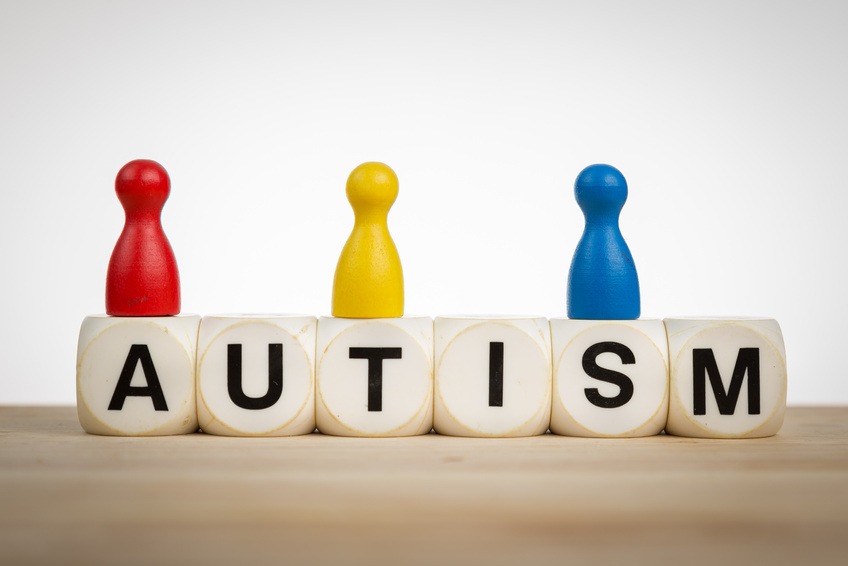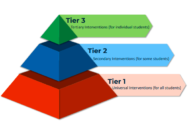By Shaima AlHosani & Ebtihal Mohsin Saleh
SCHS Nurse Unit
Read also: The Link Between Physical Abuse and Uric Acid Levels in Autism -part 2
3. Implications and Potential Applications
We are also hopeful that understanding the impact of physical abuse on autism will lead to further research to prevent such occurrences and, most importantly, seek the best outcomes of remission through sensory and behavioral treatments that are effective for victims of physical abuse. Furthermore, the discovery of decreased uric acid levels in autism presents intriguing therapeutic opportunities. In recent years, there has been a lot of interest in the therapeutic potential of raising uric acid to improve health. The realization that uric acid is a powerful antioxidant and the observation that acute illnesses often improve during an episode of gout are the driving forces behind this. Because we found that people with autism don’t have enough uric acid and because allopurinol and inosine can safely raise uric acid, we would definitely suggest that clinical trials be done to see if raising uric acid improves the main symptoms and/or other medical conditions that go along with autism. (Liu et al., 2022). (ESNAFOGLU and Ertürk 2023)
3.1 Understanding the Impact of Physical Abuse on Autism
On average, people with autism have a very different view of the world from their neurotypical peers. They think differently and act differently. This can make them particularly vulnerable to being misunderstood and punished for behavior that is a result of their autism rather than an intentional infraction. Such misunderstandings of behavior can result in physical abuse, whether intentional or not. Because the autistic individual is already different from the physical abuser, they have a harder time predicting and making sense of what is happening to them, and they are at a loss as to how to tell others and get help. This concept of discrepancy between the abuser’s reasoning and the victim’s understanding of events has been termed “difference of condition” and was first noted in the pioneering social psychology experiment by Darley and Latané, which aimed to explain why people who deviate from the norm are often mistreated.
This idea of “difference in condition” is somewhat analogous to the problem in rat models of autism attempting to administer an environmental insult (such as a drug or a toxin) and assessing its effects on behavior. Autism is a disorder of gene and environment interactions; a different genetic background will make a different response to the same environmental insult, and with no clear-cut mobilization of a typical behavioral response to social or physical cues, it is extremely difficult to assess the effects of an atypical experience on an autistic person. The impetus behind giving a rat a known brain insult and isolating it in a Skinner box is not too dissimilar to the aim of taking a vulnerable person and placing them in a care or custodial home situation. This type of situation is a high risk for abuse of any kind, and a recent study has suggested that individuals with autism are at a higher risk for various forms of abuse, including sexual abuse, with or without any mental disorder. This particular study was to become an unplanned but direct pilot for the work that we are currently discussing. An autism scientist who is one of the authors of this article received a phone call from a distraught past employee of one of her research projects, whose autistic child had recently been removed from a state school for the mentally handicapped on suspicion of having mental retardation and placed without consent into a foster care situation when the state school facilities were closed down due to government cutbacks. (Gibbs et al., 2021). (Trundle et al., 2023)
3.2 Uric Acid as a Potential Biomarker for Autism
First, we assess this study using uric acid as a potential biomarker for uric acid in autism. One of the clear implications stems from the Rho knockout mouse, since Rho is directly involved in purine biosynthesis, which leads to uric acid production. Though the Rho knockout mouse model involves a rare genetic disorder and not autism, this model may still be relevant, as abnormal behaviors in autism may share an etiology with neurodevelopmental disorders present in this model. This may also clarify whether uric acid has a causative role in autism or whether it is a secondary phenomenon. Testing for uric acid levels in humans with ASD and in an animal model of autism with known behavioral abnormalities can accomplish this.
Further determination of uric acid status in children with autism should focus on establishing urinary and serum uric acid levels in age-matched controls and subjects with autism. Children with fragile X, a known genetic cause of autism, are also known to have elevated levels of uric acid and gout. Therefore, it may be of interest to determine whether there are any similarities in uric acid status between these two groups. We need this knowledge to determine if elevated uric acid levels consistently occur in autism or if they are specific to certain subgroups of individuals with ASD. Finally, we may use cross-sectional and longitudinal studies to establish the relationship between uric acid levels and clinical symptomology in autism. Longitudinal studies utilizing animal models will also be important in establishing the effects of changing uric acid levels on the neurobehavioral symptomology seen in autism.
One important factor to consider in all of these studies is the potential effects of medication and diet on the uric acid status of individuals with autism. In autism, many states of disordered behavior and mental retardation may lead to the use of atypical antipsychotic medications and behavior-modifying drugs. Diet may also affect uric acid production and status. Therefore, any studies looking at uric acid in autism should take careful account of the subjects’ medication and dietary habits. (Boccazzi et al., 2023) (Wink et al.) (Zolkipli-Cunningham et al., 2021)
3.3 Therapeutic Approaches Targeting Uric Acid in Autism
It has already been well established that increased oxidative stress is a consistent finding in autism spectrum disorders (ASD). Oxidative stress reflects an imbalance between free radical production and the body’s ability to counteract or detoxify their harmful effects through antioxidant neutralization. Uric acid, a naturally occurring enzyme present in humans and higher primates, is our primary defense against oxidative damage caused by free radicals. Recent research suggests that a decrease in plasma uric acid levels parallels the increase in oxidative stress in ASD. This would make uric acid a prime target for developing therapies aimed at managing ASD symptoms. By doing so, the natural homeostatic process would be to rebalance the oxidative environment by raising uric acid to a level that is deemed sufficient to counteract the effects of free radicals. These therapies would not only be specific to ASD, but also for other neurological conditions and situations where oxidative damage is a prominent factor, due to uric acid’s broad range of activity and potential for employment in neuroprotection. (ESNAFOGLU and Ertürk 2023) (Liu et al., 2022).
4. Conclusion
We discovered that the occurrence of physical abuse in children with autism exacerbates their biological state. It’s not news that children with autism have elevated levels of uric acid and oxidative stress; however, our results demonstrate clearly that physical abuse in children with autism leads to a significant increase in uric acid levels and other oxidative stress markers (urinary 8-OHdG). This signifies a negative impact on these children’s lives. Uric acid is known to cause gout and kidney stones, as well as being associated with metabolic syndrome, cardiovascular diseases, and hypertension. High levels of uric acid in the brain during crucial periods of brain development could lead to a deviation from normal development trajectories and the exacerbation of underlying conditions, such as autism. During transition, the uric acid will also express long-term effects. High uric acid and oxidative stress markers will create a pro-inflammatory state, increasing the likelihood of gout and other uric acid-associated diseases. These have the potential to create further negative conditions and behaviors in these children with autism, increasing the likelihood of future abuse. Hence, physical abuse can lead to a lifetime of suffering for children with autism. We believe that there is a need for uric acid testing in children with autism who display symptoms of pain or discomfort, and indeed, in suspected victims of abuse. Given that high levels of uric acid can be treated and reduced with allopurinol and a low-purine diet, these present additional therapeutic options for these children. High uric acid is easily measurable and treatable, and doing so can decrease the risk of further abuse and lessen already existing afflictions. (Genovese & Butler, 2023) (Zhang et al., 2024) (Min et al., 2023)
References:
- Gibbs, V., Hudson, J., Hwang, Y. I. J., Arnold, S., Trollor, J., & Pellicano, E. (2021). Experiences of physical and sexual violence as reported by autistic adults without intellectual disability: Rate, gender patterns and clinical correlates. Research in autism spectrum disorders, 89, 101866. unsw.edu.au
- Ratanatharathorn, A., Koenen, K. C., Chibnik, L. B., Weisskopf, M. G., Rich-Edwards, J. W., & Roberts, A. L. (2021). Polygenic risk for autism, attention-deficit hyperactivity disorder, schizophrenia, major depressive disorder, and neuroticism is associated with the experience of childhood abuse. Molecular psychiatry, 26(5), 1696-1705. nih.gov
- Trundle, G., Jones, K. A., Ropar, D., & Egan, V. (2023). Prevalence of victimisation in autistic individuals: A systematic review and meta-analysis. Trauma, Violence, & Abuse, 24(4), 2282-2296. sagepub.com
- Shin, S. H., Wright, C., & Johnston, S. (2021). Early Life Experiences Moderate the Relationship Between Genetic Risk of Autism and Current and Lifetime Mental Health. Frontiers in Psychiatry. frontiersin.org
- Kerns, C. M., Lankenau, S., Shattuck, P. T., Robins, D. L., Newschaffer, C. J., & Berkowitz, S. J. (2022). Exploring potential sources of childhood trauma: A qualitative study with autistic adults and caregivers. Autism, 26(8), 1987-1998. sagepub.com
- Daniels-White, O., Odom, J., & Wilthew, M. (2023). The Effects of Child Sexual Abuse on Children with Autism. sfasu.edu
- Gibbs, V. & Pellicano, E. (2023). ‘Maybe we just seem like easy targets’: A qualitative analysis of autistic adults’ experiences of interpersonal violence. Autism. ucl.ac.uk
- Rosen, N. E., Lord, C., & Volkmar, F. R. (2021). The diagnosis of autism: from Kanner to DSM-III to DSM-5 and beyond. Journal of autism and developmental disorders, 51, 4253-4270. springer.com
- Rice, C. E., Carpenter, L. A., Morrier, M. J., Lord, C., DiRienzo, M., Boan, A., … & Wiggins, L. D. (2022). Defining in detail and evaluating reliability of DSM-5 criteria for autism spectrum disorder (ASD) among children. Journal of autism and developmental disorders, 52(12), 5308-5320. nih.gov
- Sallustio, F., Picerno, A., Tatullo, M., Rampino, A., Rengo, C., Valletta, A., … & Falcone, R. M. (2021). Toll-like receptors in stem/progenitor cells. In Toll-like Receptors in Health and Disease (pp. 175-212). Cham: Springer International Publishing. unina.it
- Wang, M., Zhang, H., Liang, J., Huang, J., & Chen, N. (2023). Exercise suppresses neuroinflammation for alleviating Alzheimer’s disease. Journal of neuroinflammation, 20(1), 76. springer.com
- Thorsen, M. (2020). Oxidative stress, metabolic and mitochondrial abnormalities associated with autism spectrum disorder. Progress in molecular biology and translational science, 173, 331-354. [HTML]
- Bjørklund, G., Meguid, N. A., El-Bana, M. A., Tinkov, A. A., Saad, K., Dadar, M., … & Chirumbolo, S. (2020). Oxidative stress in autism spectrum disorder. Molecular neurobiology, 57, 2314-2332. academia.edu
- Giesser, R., Goltser-Dubner, T., Pevzner, D., Shalev, A., Masarwa, R., Canetti, L., … & Segman, R. (2020). Elevated salivary uric acid levels among adolescents with eating disorders. Eating and Weight Disorders-Studies on Anorexia, Bulimia and Obesity, 25, 1821-1825. [HTML]
- Goltser Dubner, T., Giesser, R., Shalev, A., Keller, S., Segman, R., & Galili-Weisstub, E. (2023). Uric Acid Levels and Eating Disorders. In Eating Disorders (pp. 167-179). Cham: Springer International Publishing. [HTML]
- Wang, R., Gao, Y., Wang, P., He, C., & Lu, H. (2024). Association between serum uric acid and bone mineral density in males from NHANES 2011–2020. Scientific Reports. nature.com
- McKenzie, R., Dallos, R., Stedmon, J., Hancocks, H., Vickery, P. J., Barton, A., … & Ewings, P. (2020). SAFE, a new therapeutic intervention for families of children with autism: a randomised controlled feasibility trial. BMJ open, 10(12), e038411. bmj.com
- Kamali, M., Sivapalan, S., Kata, A., Kim, N., Shanmugalingam, N., Duku, E., … & Georgiades, S. (2022). Program evaluation of a pilot mobile developmental outreach clinic for autism spectrum disorder in Ontario. BMC Health Services Research, 22(1), 426. springer.com
- Brown, R. B. (2023). Dysregulated phosphate metabolism in autism spectrum disorder: associations and insights for future research. Expert Reviews in Molecular Medicine. cambridge.org
- Fujii, Y., Matsumura, H., Shirasu, A., Nakakura, H., Yamazaki, S., Kanazawa, T., … & Ashida, A. (2023). Unexpected cause of repeated peritoneal dialysis-related complications: a case study of autism spectrum disorder with normal intelligence quotient in an adolescent. Renal Replacement Therapy, 9(1), 16. springer.com
- Üblagger, D., Auer, H., Bezakova, M., & Kirchlechner, V. (2024). Toxocarosis in a patient with autism spectrum disorder presenting with severe hypereosinophilia and acute respiratory distress: a case report. Parasitology Research. springer.com
22.DeLouize, A. M., Eick, G., Karam, S. D., & Snodgrass, J. J. (2022). Current and future applications of biomarkers in samples collected through minimally invasive methods for cancer medicine and population‐based research. American Journal of Human Biology, 34(11), e23665. nih.gov
23. Gangi, A., & Howe, J. R. (2022). Carcinoid Crisis. Endocrine Surgery Comprehensive Board Exam Guide, 1039-1052. [HTML]
24. Liu, X., Lin, J., Zhang, H., Khan, N. U., Zhang, J., Tang, X., … & Shen, L. (2022). Oxidative stress in autism spectrum disorder—current progress of mechanisms and biomarkers. Frontiers in psychiatry, 13, 813304. frontiersin.org
25. ESNAFOGLU, E., & Ertürk, E. Y. (2023). Reduced levels of plasma strong antioxidant uric acid in children with Autism Spectrum Disorder and Attention deficit-hyperactivity disorder. Middle Black Sea Journal of Health Science, 9(2), 351-361. dergipark.org.tr
26. Boccazzi, M., Raffaele, S., Zanettin, T., Abbracchio, M. P., & Fumagalli, M. (2023). Altered purinergic signaling in neurodevelopmental disorders: focus on P2 receptors. Biomolecules, 13(5), 856. mdpi.com
27. Wink, L. K., Badran, I., Dominick, K., Shaffer, R., & Duncan, P. D. A. (). Evaluating the Neurophysiologic and Clinical Effects of Single-Dose Acamprosate, Lovastatin, Minocycline and Placebo in Fragile X Syndrome. classic.clinicaltrials.gov. clinicaltrials.gov
28. Zolkipli-Cunningham, Z., Naviaux, J. C., Nakayama, T., Hirsch, C. M., Monk, J. M., Li, K., … & Naviaux, R. K. (2021). Metabolic and behavioral features of acute hyperpurinergia and the maternal immune activation mouse model of autism spectrum disorder. PloS one, 16(3), e0248771. plos.org
29. Genovese, A. & Butler, M. G. (2023). The autism spectrum: behavioral, psychiatric and genetic associations. Genes. mdpi.com
30. Zhang, Z., Wang, W., Yuan, X., Wang, X., Luo, Y., Dou, L., … & Wu, M. (2024). Adverse childhood experiences and subsequent physical and mental health among young adults: results from six universities in China. Psychiatry Research, 115832. [HTML]
31.Min, H., Zhu, S., Safi, L., Alkourdi, M., Nguyen, B. H., Upadhyay, A., & Tran, S. D. (2023). Salivary diagnostics in pediatrics and the status of saliva-based biosensors. Biosensors, 13(2), 206. mdpi.com
SHAIMA ABDALLA ALHOSANI
- Master’s in Nursing
- Bachelor of Science in Nursing
- Acting as a Head of nurse and Member of the Health and Safety Committee in Sharjah City for Humanitarian Services (SCHS) 2023 – Current
- Acting as a Head of the Health Care Department in Sharjah Education Council 2020-2023
- School nurse and team leader in Sharjah Education Council 2012-2019
- Member of the Youth and Adolescent Health Committee
- Member of executive Business Continuity Committee of the Sharjah Education Council
- Member of the ISO Committee of the Sharjah Education Council
- Member of the National Bullying Committee
- Member of the Child Friendly Schools and Nurseries Committee
- Member of the Evaluation and Follow-up Committee for the Covid virus in schools and nurseries
- Member preparing an initial draft of the draft optional UAE standards “Preventing and Combating Bullying.”
- Member of the Sharjah Occupational Health and Safety Standards Team in the education sector
- Member of the Sharjah Occupational Health and Safety Standards Team in the education sector
- First Line of Defense Ambassadors Award
- Volunteer opportunity to take pride in science offered by the Sharjah Education Council to contribute to the organization of virtual awareness activities and programs for community members
- Volunteering Opportunity Volunteer for the endowment offered by the Endowment Department to contribute to reviving the endowment year among community members
- American Heart Association Basic Life Support for Health Care Professional Course
- Diploma in Professional Trainer Preparation
- Adult Mental Health First Aid course by The Light House
- The ICF Coaching program (74 hrs.) by Leadership Works
Ebtihal Mohsen Saleh
- Bachelor of Nursing
- Imperial Diabetes Educator Course : diabetic educator
- Ibn-Khaldun private school as a school nurse for 8 months
- Sharjah government as school nurse in Sharjah city for humanitarian services since 1/8/2012 until present dealing with different cases of Students with Special need such as Down syndrome, autism, cerebral palsy and mental retardation and some other with psychological and mental disorders as well as DIABETES and Epilepsy cases
- Provide immunization for different age groups according Ministry of Health schedule such as: STUDENTS (Td, DTap, MMR, Varicella, OPV and Rabies vaccine)
- Work during summer time in clinics such as: Waset and Sharjah health center, hospital such as al Kuwait and Alqasmi, nursery such as al Rahmania nursery and al Shaimaa nursery for 7 years.
- Work during covid crisis in al-riq’a clinic and waset clinic for 6 months
- Work as Coordinator of Nursing Licenses for nurses In Sharjah education council and Sharjah City for Humanitarian Services since 2017 until 2019
























